Ritchie Boys
“The Ritchie Boys, named after Camp Ritchie in Maryland where they received their military training, were a little known American Army Intelligence Unit comprised primarily of Jewish soldiers, mostly refugees who fled Nazi controlled Germany. They came to America, joined the US Army and then went back to Europe with military training and a deep knowledge of the enemy and the landscape. The Ritchie Boys significantly contributed to the Allied war effort and were trained for military action in both the European and Pacific theater of operations.” From the press release of the Holocaust Memorial Center, Farmington Hills, MI on the occasion of their exhibit “Secret Heroes: The Ritchie Boys.” 2011.


Please help identify these men of IPW team 80 and IPW team 62 (and possibly others).
We have identified the following men so far:
Front Row
- Staff Sgt. Ernest Wachtel
- Lt. Herman Lang
- Cpt. Kovach
- Cpt. Edmund Jann
- Staff Sgt. Rolf Blank “Wimpy”
Back Row
- Henry Sheridan
- Henry Ralph Mahler
- Max Hirschberg
- John Mendheim
- Lucian Goldschmidt
- Kurt Loebel
- Henry Butler
Statistics
1. 15,253 servicemen were enrolled in the basic eight week MITC course at Camp Ritchie during WWII.
2. 11,637 graduated from the eight week course.
3. 627 service men took special one-day or two-day instruction classes at Camp Ritchie.
4. 800 servicemen took the special classes in psychological warfare at Camp Sharpe, PA.
5. WAC’s (Women’s Army Corps) served as secretaries, librarians, analysts, and instructors.
“The Ritchie Boys – Any serviceman or woman who was ordered to report to Camp Ritchie or Camp Sharpe and who was trained to serve as a World War II Intelligence (officer or enlisted), or who played a part in the training of these service personnel.” Dan Gross, Ritchie Boy archivist
If you can help Identify any of these Ritchie Boys please contact me here.
Twelve Notable Ritchie Boys
After WWII, many Ritchie Boys were very successful in their careers. Here are twelve notable Ritchie Boys from a variety of fields.
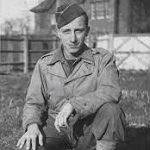
Ralph Baer
Inventor
Known as the father of the video game, Baer developed the first such game, Odyssey, for Magnavox. Later he partnered with a toy company to make electronic games, the most successful of which is Simon, a toy that challenges coordination and memory.
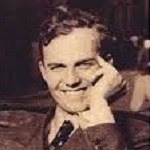
Gardner Botsford
Editor and writer
Botsford began writing for The New Yorker before the war. After his military service, he returned to the magazine and eventually became a distinguished editor, a job he enjoyed for 40 years.

John Chafee
Statesman
He entered public life, like many members of his family before him, holding offices both elected and appointed. He was governor of Rhode Island from 1962 to 1969, Secretary of the Navy under President Nixon, and a US senator from 1976 until his death in 1999.
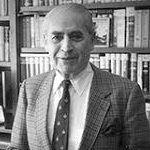
Eugene Fodor
Travel writer
A travel writer even before the war, he founded Fodor’s in 1949 and created Fodor Modern Guides, travel books that included history, cultural insights, and practical information for travelers.

John W. Kluge
Media mogul and philanthropist
Founder and owner of Metromedia, the Harlem Globetrotters, and the Ice Capades, John Kluge was, at one time, the 2nd richest man in America. He shared his wealth, making large donations to United Cerebral Palsy, Columbia University, the restoration of Ellis Island, and the Library of Congress.
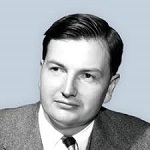
David Rockefeller
Banker, business leader, philanthropist
Born into wealth, David Rockefeller began his illustrious career in banking after WWII. He was CEO of Chase National Bank, as well as chairman on its board of directors. He became a leader in world finance and public service, donating much in the areas of science, medicine, and education.
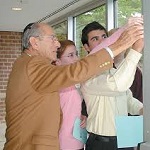
Eric Ross
Manufacturer and philanthropist
Ross started a vinyl scrap business after WWII and soon began recycling the material. His company, Alpha Chemicals and Plastics Corp., became the leading supplier of specialty PVC compounds in the industry. In later years, he donated much of his fortune to various causes in the arts, education, medicine, and the Jewish community.
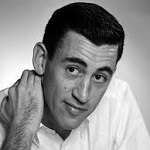
J.D. Salinger
Writer
In his early career, Salinger was a writer for The New Yorker magazine. His landmark novel, The Catcher in the Rye, published in 1951, set a new course for literature and made him a role model for many young writers in post-WWII America.
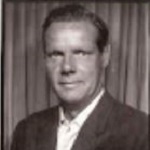
Rudolph Schirmer
Composer
Rudolph Schirmer left a rich legacy of creative works—poetry, fiction, nonfiction, and music. He is often credited with bringing classical music to America.
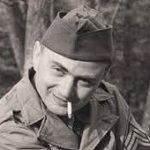
David Seymour
Photographer
Seymour developed his passion for photography as a young man in the 1930s, achieving early recognition for his pictures of the Spanish Civil War. After WWII, he became the trusted portraitist of many film stars, including Sophia Loren and Ingrid Bergman and as a photographer for Life, Look, and Paris-Match.

Ernst Wynder, MD
Medical Researcher
Wynder was the first to study the risk factors of smoking tobacco. After the war, as a medical student, he began his work as a researcher, collecting case histories of lung cancer patients. His studies led to the definitive 1950 study linking lung cancer and smoking.
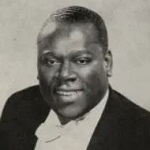
William Warfield
Concert singer and actor
Warfield, one of the few black Ritchie Boys, traveled the world as a sought-after bass baritone concert singer and soloist. His rendition of “Ol’ Man River” in the 1951 movie, Showboat is iconic. He starred as Porgy in the European tour of Porgy and Bess and often appeared on television (Ed Sullivan Show, The Colgate Comedy Hour).

Herman Lang
“Herman Lang, the man who inspired me to write Immigrant Soldier, earned 6 Emmys for his excellent camera work during a long career with CBS. As I came to know more about the Ritchie Boys, I realized that Herman’s success was only the tip of the iceberg.” – Kathryn Lang-Slattery.
Dedication
Immigrant Soldier is dedicated to all those who, through premonition or foresight, determination and luck, were able to escape Nazi Germany before the trap was fully closed. Their lives were uprooted and changed forever. And, most especially, I dedicate it to those immigrant Ritchie Boys who returned to Europe and used their knowledge, experience, and training to help bring an end to the Nazi terror. Each day, fewer of these men are here to share their stories. Finally, but not least, I dedicate this book to the memory of Herman Lang and his wife, Marge. They welcomed me into their home, shared their stories, and encouraged me to write this book.